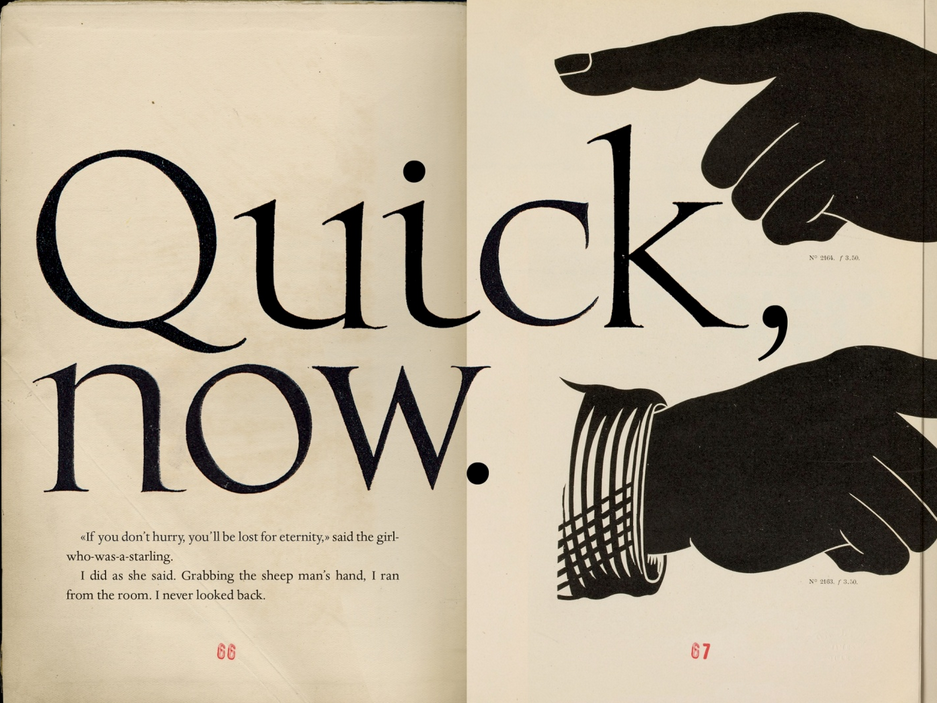"If it's in a word, or it's in a look, you can't get rid of The Babadook."
by Jon Petre
With that tagline and a fringed, post-traumatic nightmare sequence begins The Babadook. Writer and director Jennifer Kent has really outdone herself with her latest piece, which is a fresh and cognitive film that shows you can still make proper horror without the jump scares. Seriously, I don't remember a single one.
| Oh look, it's like a newspaper. Perhaps we can burn it for more nightmare fuel. |
Amelia is a widow before her time, her husband Oscar having died in a car accident on the way to the hospital to give birth to her son, Sam, played by a surprisingly talented Noah Wiseman. Sam is something of a problem child, spending his time creating dangerous traps and talking about the monsters. Something I found very close to home (because it was realistic, and genuine) was the sense of weariness that Essie Davies and Kent conveyed in Amelia; she is exhausted, physically and mentally. This adds to the tension in shifting our sympathies to her and against Sam, who is presented as something of a brat for the first half of the film, serving only to make things worse for our embittered single mother. Amelia hasn't slept in weeks. Every night she has to comfort Sam and read him a story; one night, he chooses a book that his mother doesn't recognize, "Mister Babadook". After a few pages, it's clear that there's nothing normal about this story, and all the clues suggest that it's not going to end well for mother and son. But with all the stress and all the misfortune, we're not sure whether there really is a Babadook, or if Amelia's been, ah, working too hard.
I didn't get a chance to see this when it came out, which disappointed but didn't really bother me. It should have. This was great, in that it was unconventional enough to stand out and surprise me in a good way but familiar enough that I wasn't lost and that we were still standing on solid ground with what to expect, guessing what was going to happen, and so on. It was disturbing, and it broke the rules of British TV, so be warned. But then it was Australian. In a previous interview Kent had stated that she'd wanted to go for a handmade, homebrew feel to the props and the effects, and this really came out well--in the book, Mister Babadook, and in the creature itself. There're obvious Eastern European connotations (for those of you interested, the inspiration for the monster came from the Polish myth of the Kikimora) and that compliments this, although don't call me xenophobic. Furthermore the film was acted well enough, at least where it counted, in Amelia and Sam. Those dead, blank stares that Davies delivers really say volumes about the isolation and the confusion that the Babadook causes, and in their way this unsettled me more than many of the less subtle devices should have. I suppose there's the difference between a slasher movie and a psychological piece: the slasher makes you scared of what lurks behind the shower curtain while psychological horror makes you question what your existence is about, and if that's the monster. Or something.
 |
| Is this where all the jump scares went, mommy? |
But the real success came in Jennifer Kent herself, in the writing and in the filming. The dialogue and the photography served to create a tense, claustrophobic atmosphere that put me on edge in the same way that more tawdry horror films do but without taking the easy road of the jump scares, which are frankly embarrassing when they are so often overused. Like a good haunted house maze, the minute details all add up to create a thrilling environment. I felt however that several of the plot points, such as Daniel Henshall's Robbie and the dead Dad were slightly underused, or even forgotten; not to mention one or two plot holes (who reads a book with a Babadook on the cover to a disturbed child with access to knives?) and a lukewarm ending, but I can forgive it for what all the things it got right, which were done brilliantly. I guess it is fiction, after all. The Babadook is available on DVD now.
4.5/5
Special Features Included On Disc:
Featurettes:
Featurettes:
- Special Effects: The Stabbing Scene
- There’s No Place Like Home: Creating The House
- Illustrating Evil: Creating The Book
- The Stunts
Trailers:
- Alternate trailer
- Original trailer
- UK trailer




